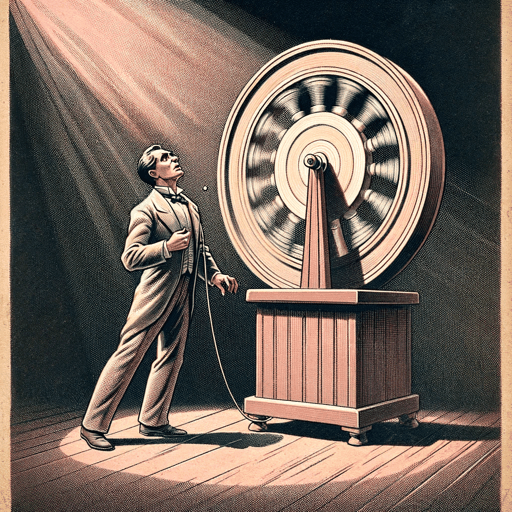86 pages • 2 hours read
Ralph EllisonInvisible Man
Fiction | Novel | Adult | Published in 1952A modern alternative to SparkNotes and CliffsNotes, SuperSummary offers high-quality Study Guides with detailed chapter summaries and analysis of major themes, characters, and more. For select classroom titles, we also provide Teaching Guides with discussion and quiz questions to prompt student engagement.
Summary and Study Guide
Overview
Invisible Man was published in 1952 and written by African American author Ralph Ellison. It won the National Book Award for Fiction in 1953, and Ellison was awarded the National Medal of Arts in 1985 for his contributions to American literature. In addition to his fiction, he wrote essays and was a professor, teaching at several prestigious American universities including Yale University, Bard College, New York University, the University of Chicago, and Rutgers University. He also received medals from two US presidents as well as the Presidential Medal of Freedom and various international honors. Invisible Man is a 20th-century realist novel that examines the issue of African American oppression in 1930s America.
This guide refers to the 1980 Random House edition.
Plot Summary
Invisible Man’s protagonist is a young Black man whose name is never given in the text. He grows up in the Jim Crow southern region of the US and is driven to try to achieve professional success even in a segregated world in which he is the victim of racial stereotypes and discrimination. As a graduating high school senior, he is invited to give a graduation speech at a reception attended by prominent White men in his hometown. However, he quickly finds that the event is an excuse to force young Black men to entertain the White people by boxing blindfolded and afterwards scrambling on an electrified carpet for fake money. At the end of the night, he’s given a briefcase with notification inside that he has been admitted to a Black college.
Several years later, the protagonist angers the college’s president by taking an esteemed White founder to impoverished areas surrounding the college rather than presenting a more “sanitized” view of the area. The president punishes him by sending him to New York City, ostensibly just for the summer so he can learn to interact with White people in a professional way. The president sends sealed letters that he claims are recommendations to prominent White men in New York. Upon his arrival, the protagonist discovers that the letters actually tell the White men that the protagonist has been expelled and not to give him work, stranding him in the city without any savings.
Desperate to earn money, the protagonist works one day in a paint factory, where an explosion injures him. He’s treated in the factory hospital and involuntarily undergoes a lobotomy-like procedure, then is released and told he’ll be “compensated” for his trouble. The protagonist finds another job with an organization called the Brotherhood of Man as a community activist and orator. The Brotherhood works under what seems to be a strict code of ethics that appeals to the protagonist, and he enjoys his work for a while, becoming familiar with other activists in Harlem, where he’s based.
After a few months of growing disagreement and contention between the Brotherhood and the protagonist, he’s sent out of Harlem for a while. Upon his return, he finds that the Brotherhood has abandoned its work in Harlem, leaving the people it assisted desperate and without resources. Enraged by the Brotherhood’s actions and the unjust death of a fellow activist, he stages a funeral that raises an outcry against White authorities from the Harlem community.
The protagonist is thrown into the race riots that erupt and realizes that the Brotherhood means to make him a scapegoat for the unrest. Having been let down repeatedly by the people and groups who once had his respect, he finally decides that he will determine his own sense of self rather than letting it be dictated to him. During the riots, he falls down a manhole and uses it as a chance to stage a “disappearance.” His absence lets him spend some years living a quiet life in Harlem before he reemerges, ready to rejoin the effort of social causes. Ellison combines psychological and social storylines in Invisible Man, examining the effects of racism on his protagonist and his ability, nonetheless, to rise above the difficulties he encounters to craft his own sense of self.
Related Titles
By Ralph Ellison



